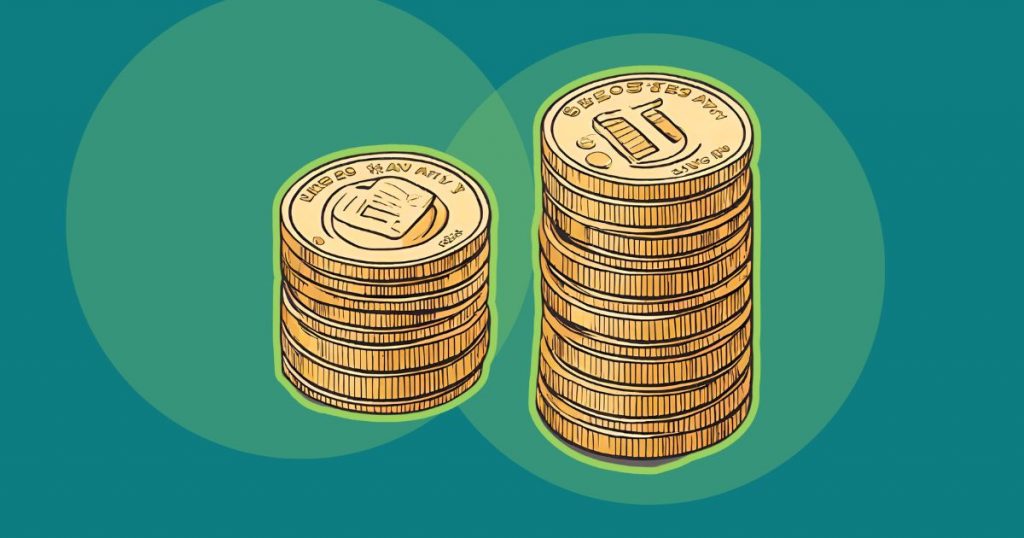The News Industry’s Way Forward Won’t be a Straight Line
What brands can learn from its trailblazing, zigzag path.
Uzra Khan is director of editorial at Long Dash, and formerly worked at Reuters and the MIT Media Lab. She has contributed to Foreign Policy and Quartz.
The COVID-19 pandemic is creating chasms where there were cracks in our economic system, and the media and journalism industry is one such existing crack. Already in crisis for years, journalism organizations have faced tectonic shifts in the way audiences consume information. The pivot from print to digital was the most significant of these shifts. More recently, it has struggled with an overreliance on advertising revenue, a tenuous relationship easily disrupted by the likes of Facebook and Google.
Bigger national news brands have seen a surge in traffic and subscriptions from COVID-19. However, it is unclear how long these gains will last, and the virus is ravaging its way through an already-precarious local news ecosystem that often relies on advertising from smaller businesses who are currently squeezed for cash.
Amid this grim uncertainty, there are some things we do know to be true, which can point to a way forward for media companies—and imply lessons for brands more broadly. Media as an industry has traditionally been forced to be extraordinarily nimble, quickly adjusting to volatile changes in the ways its audiences consume information. It is used to being on the frontlines of rapid change, and brands can learn from its response.
1) Be a steward of a more informed public.
Media may be financially precarious, but it is far freer to inform the public about the virus than in previous pandemics. The 1918 influenza pandemic is the most closely comparable case to coronavirus, based on its infectiousness and spread. It has often been referred to as the “Spanish flu” not because it originated in Spain, but because newspapers in neutral Spain during World War I were freer than they were in the U.S., United Kingdom, Germany, and France due to wartime censorship.
There was also rampant misinformation in 1918 about the measures individuals could take to keep themselves safe. For example, hand washing was not a message disseminated widely to the public, and people thought spending time outside (even in large groups) would help protect them against the virus. Today, despite the polarization in U.S. media, a considerably higher level of consensus has built up around basic facts about the virus and how to control its spread.
This is not to say that there haven’t been missteps in the coverage of COVID-19. Several news outlets, Fox News prominently among them, initially dismissed its seriousness and only later changed their tune, and there have been several myths and misunderstandings about the virus floating around. However, on the whole, faced by two media-unfriendly presidents in 1918 and 2020, the American media has been able to fill the vacuum of public information far more doggedly and diligently in the 2020 pandemic. It has played an enormous role in popularizing terms such as “social distancing” and “flatten the curve.”
Media has stepped up during this pandemic to inform the public through dogged reporting, pop-up newsletters, special podcast series, and other creative initiatives. Other brands should follow suit. For example, Google’s “Do the Five” initiative, in partnership with the World Health Organization, appeared on Google homepages around the world. Facebook and its platforms like WhatsApp have taken unprecedented measures to combat misinformation, given the scale at which they usually harbor false and pernicious rumors. The Ad Council has brought together both government agencies and a number of digital and technology companies—including Amazon, Apple, Snapchat, Pinterest, and Tiktok—to extend the reach of critical COVID-19 information. (Note: The Atlantic’s creative studio developed the digital ad creative for this campaign.)
2) Put the audience first—at all costs.
Serving audiences first, through concrete actions rather than lip service, will build and maintain relationships that endure beyond this crisis. This is true for any sector, but particularly true for the media. The never-relenting competition for digital eyeballs has forced the media to think harder about delivering value and building loyalty. Those who managed to build these deeper audience relationships, and wean themselves to some degree off advertising revenue, are better prepared to navigate this moment. The Atlantic is a case in point here: it made its “pivot to paid” by launching its paywall in September 2019. In this crisis, even though its essential COVID-19 coverage is free, it is seeing a spike in subscriptions.
This crisis has also hit at a time when there was already increasing awareness among brands around the importance of being purpose-driven and putting audiences first. Hayley Romer, chief revenue officer and publisher at The Atlantic, says this moment is different from previous crises, like the financial crisis of 2008 or the post 9/11 era. “There is much more conversation about companies being more focused on purpose, and being for stakeholders not shareholders. You are therefore seeing much more rapid response in the purpose-driven leadership response among organizations.”
There are countless examples of news organizations innovating to meet their audience’s needs and challenges in this moment. Most news outlets with paywalls have made their COVID-19 coverage free, including The Atlantic. Several news outlets launched a free daily coronavirus briefing newsletter, trying to be ahead of the curve and offering timely takes. Hundreds of local news outlets have mobilized their staff to investigate tips so they can guide their communities through the day-to-day of the virus.
There is much more conversation about companies being more focused on purpose, and being for stakeholders not shareholders.
Media is relentlessly prioritizing its audiences and quickly finding new ways to meet their needs. The brands who are able to do the same now, even if it requires making considerable adaptations to their business, will build stronger audience relationships. Several brands have already demonstrated tremendous nimbleness and outside-the-box audience thinking, matching the needs of the moment with their strengths in new and creative ways, and putting their audiences first instead of their shareholders. Liquor and beer companies such as Diageo, Anheuser-Busch, and Tito’s have pivoted to making hand sanitizer and giving it away for free to hospital staff and others who need it most. Ford has partnered with General Electric and pledged to produce ventilators, joining General Motors and Tesla in the same effort. Countless gyms and fitness studios across the country and the globe are offering free online classes. Sweetgreen is offering free, healthy meals to hospital staff in select locations, and is looking to expand this effort. These creative efforts will help brands develop deeper and more enduring relationships with their audiences.
3) Focus philanthropic efforts on longer-term, strategic initiatives.
Philanthropy will be an increasingly powerful vehicle for impact, particularly as a funding source for journalism. Philanthropy dollars in the journalism industry have been on a steady upward trajectory, even before the COVID-19 outbreak. The total amount quadrupled between 2009 and 2019, according to a study by Media Impact Funders, and amounted to a staggering $1.7 billion.
Grant dollars from foundations and from a few initiatives by private sector technology companies have been a valuable source of revenue in many media organizations’ diversified portfolios, especially nonprofit news outlets, public media, and local institutions. While some forms of revenue, such as advertising and live events, will be negatively impacted by COVID-19, steady minimum spending requirements for foundations will maintain the size of their grant outlays (though they may shift to new causes or beneficiaries). Furthermore, the last several years have seen the rise of new and innovative philanthropic models to fund journalism. For example, the American Journalism Project has pioneered a “venture philanthropy” approach to its grants to local nonprofit news, focusing on capacity building and long-term financial sustainability (disclaimer: Long Dash has worked with the American Journalism Project). All these factors will give philanthropy a new and outsized role in funding journalism.
Brands will need to be more strategic about their grant-making in the future. Currently, a great deal of brand philanthropy is naturally focused on short-term, direct-response efforts to COVID-19. Facebook, for example, in partnership with the Lenfest Institute and the Local Media Association, has offered $1 million to local news at this time, but caps each individual grant at $5,000. This is an example of a grant model that may work well in the short term, but does not consider the long-term requirements of local news outlets who will need far more transformational support in their revenue, capacity, and skills training in the future. Brands should find ways to support organizations and causes in a recurring manner, or in ways that support their long-term goals and ambitions, not just one-off, small-scale projects.
4) Support local news—and the communities they serve.
Despite there being hundreds of media outlets across the country, the bulk of funding is concentrated on a large concentration of relatively few media organizations. This is what the Shorenstein Center at the Harvard Kennedy School and the Northeastern School of Journalism calls “pack philanthropy” in the media funding space. It is symptomatic of a field where, as they put it, “money follows money.” Only a dozen news nonprofits accounted for three-quarters of annual funding within the sector between 2010-2015.
There are many reasons for pack philanthropy: foundations that want to help journalism’s cause either lack expertise in media and journalism, or lack knowledge of the different local communities where small news organizations play a crucial role. In many cases, however, it also comes down to individual news organizations not having a clearly articulated, distinctive value proposition for their audiences, or a pitch to potential funders. Successful players in the space have managed to do this, and to succinctly describe themselves in terms that are not shared by any other media organization. For example The Texas Tribune, an often-lauded beacon in this regard, describes itself as “the only member-supported, digital-first, nonpartisan media organization that informs Texans—and engages with them—about public policy, politics, government, and statewide issues.”
Ensuring assistance is more equitably distributed across the local news ecosystem is critical. A vibrant local news ecosystem that can deliver trustworthy and accurate information to audiences has always been foundational to democracy. Now it is a matter of life and death, as the COVID-19 response is being implemented by governors and mayors on a state and local level. And given the view shared by several experts, including Dr. Anthony Fauci who said that COVID-19 “very well might” be a cyclical event that returns in the fall, informing audiences accurately and in a timely manner about it will be crucial for a long time. Communities that are not equipped with this source of reliable information risk spreading the virus.
Many brands would benefit from helping to keep local news afloat, but they need to approach it differently. Brands must realize the value that a vibrant local news ecosystem has for our entire democracy, within which they operate. Specifically, there is a growing body of evidence that local news builds communities, enhances civic engagement, holds local power to account, and offers a crucially valuable window into audiences who live beyond major metropolitan areas. Brands should find new ways to partner with and support local news and their communities, whether through direct-response services or specific reporting initiatives. For example, they could partner with local news to create comprehensive databases of restaurant delivery options or places to procure medicines in a community. Brands should also think twice before pulling advertising dollars from local news, avoiding it when they can. And, they should be more strategic about where they invest and avoid a herd mentality when it comes to supporting local news.
Brands would benefit from helping to keep local news afloat, but they need to approach it differently.
5) Help restore consumer purchasing power.
COVID-19 has and will continue to devastate consumer purchasing power across the country. People who are laid off, taking unpaid leave, are caregivers, or are dealing with high medical fees will no longer be able to sign up for new subscriptions and memberships. While a handful of leading national news organizations have seen large spikes in subscriptions since the outbreak (The Atlantic being one of them), as well as some local news outlets, these gains are unlikely to trickle down broadly. It is also unclear how long the trend will continue, or whether it will be able to make up entirely for revenue lost from other sources.
The one bright spot: readership is at an all-time high. Media will need to be able to capture and monetize this traffic spike and keep membership and subscription revenues from plummeting precipitously. The extent to which it will be able to do so will depend, in part, on how much the stimulus package unrolled by the federal government will be able to secure consumer purchasing power. Currently, the CARES Act does provide small businesses, which could include smaller publishing houses, low-interest loans from the Small Business Administration program. However, when it comes to a long-term boost in purchasing power for individual consumers, the current allocations do not look as promising.
The media industry has learned that its stablest revenue source is a loyal audience willing to pay for it. In this crisis, brands must help secure individual ability to pay. A long-term strategy for brands should focus not just on rebuilding supply chains, but also on regrowing demand. Lobbying exclusively for large bailout packages is short-sighted; brands should be fighting also for the people whose purchasing power the economy revolves around. Producing products at scale holds little value if a large proportion of consumers can no longer afford to buy them. Brands should, together, protect their workers as members of the broader consumer audience, to the absolute best of their ability. They should offer paid sick leave and health insurance, and avoid layoffs as much as they can.
Strong, loyal relationships between brands and their audiences are critical for their long-term sustainability and their ability to endure through crisis. The more brands can work to preserve the purchasing power of their audiences at a time of crisis, the better off they will be. They can look to the media industry to pave the way, as it continues its years-long effort to grow and strengthen loyalty among audiences and steady sources of consumer revenue.
My own hope is that we come together: readers and consumers of journalism, philanthropists, government, and brands, to find new and creative ways to secure and rebuild the media industry through this critical time. A strong, vibrant, national and local system of reliable information is foundational to our democracy, and feels more essential than ever now. Its ability to make it out of this crisis, and pave the way for other brands to follow suit, will have life and death consequences for people in the U.S. As Margaret Sullivan wrote in The Washington Post, “At a time when good reporting has seldom been more vital and more threatened, I do know that we need to try our damnedest.”



